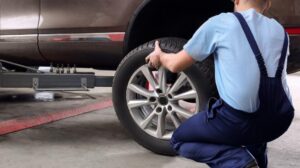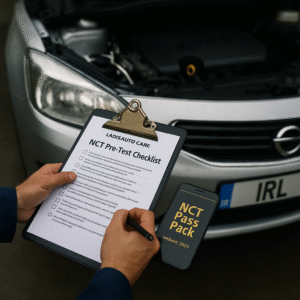Introduction: Understanding Transmission Slipping
Transmission slipping is a critical issue that vehicle owners need to be aware of. It occurs when the transmission fails to engage properly, resulting in a lack of power transfer from the engine to the wheels. This can manifest in various ways, such as delays in acceleration, unusual noises like grinding or whining, and difficulty changing gears. In some cases, the vehicle may even feel like it is hesitating or stalling when you try to speed up.
Recognizing the symptoms of transmission slipping is crucial for preventing further damage and avoiding more costly repairs down the line. When a transmission slips, it not only impacts the vehicle’s performance but also poses safety risks for the driver and passengers. The sooner you address the issue, the better your chances of mitigating severe damage to the transmission system.
This post aims to provide a comprehensive guide on what actions to take if you suspect your car’s transmission is slipping. We will discuss the symptoms in more detail, explore potential causes, and offer practical advice on how to diagnose and fix the problem. By understanding the importance of timely intervention and knowing what steps to follow, you can maintain the longevity and reliability of your vehicle’s transmission.
Common Causes of Transmission Slipping
Transmission slipping is a prevalent issue that can significantly impact the performance and longevity of a vehicle. Understanding the causes behind this problem is crucial for effective resolution. One of the primary reasons for transmission slipping is low transmission fluid. Transmission fluid is essential for lubricating the moving parts within the transmission, cooling the system, and ensuring smooth gear shifts. When the fluid level is low, it can lead to overheating and increased friction, causing the transmission to slip. Over time, this can result in severe damage to the gears and other components.
Another frequent cause of transmission slipping is worn-out gears. Gears play a critical role in transferring power from the engine to the wheels. With regular wear and tear, the teeth of the gears can become worn down, leading to inefficient power transfer. This wear can cause the transmission to slip, as the gears may not engage properly. Worn-out gears not only affect the vehicle’s performance but also increase the risk of further damage to the transmission system.
A failing transmission control module (TCM) is another significant factor contributing to transmission slipping. The TCM is a computer that manages the operation of the transmission, ensuring that gear changes occur at the appropriate times. When the TCM malfunctions, it can disrupt the transmission’s operations, leading to erratic gear shifts and slipping. A defective TCM can also cause the vehicle to enter a “limp mode,” limiting its performance to prevent further damage.
Understanding these common causes of transmission slipping is vital for timely intervention and repair. Addressing low transmission fluid levels, replacing worn-out gears, and ensuring the proper functioning of the transmission control module can prevent further complications and enhance the overall health of the vehicle’s transmission system.
Immediate Steps to Take When You Notice Transmission Slipping
When you first notice signs of transmission slipping, it is paramount to take immediate action to prevent further damage to your vehicle. Start by checking the transmission fluid. The transmission fluid is crucial for the proper functioning of your car’s transmission system. Ensure your car is parked on a level surface and the engine is off. Locate the transmission dipstick, usually found near the engine bay. Remove the dipstick, wipe it clean with a cloth, reinsert it fully, and then pull it out again to check the fluid level. The fluid should be between the “Full” and “Add” marks. If it is low, top it up with the recommended type of transmission fluid for your vehicle.
Additionally, examine the quality of the transmission fluid. Healthy transmission fluid should be a clear, red liquid. If it appears dark, burnt, or contains debris, it is a sign of potential internal damage, and immediate attention is required. For further insights into maintaining your transmission, visit Auto Query.
If you have topped up the fluid and the problem persists, it is essential to seek professional diagnostic services. Transmission issues can be complex and may require specialized tools and expertise to diagnose accurately. Ignoring the problem could lead to more severe damage, which might be costlier to repair in the long run. Consulting with a certified mechanic or using advanced diagnostic tools, such as those offered by Auto Query Pro, can provide a more precise understanding of the underlying issues.
In summary, do not ignore signs of transmission slipping. Promptly checking and maintaining transmission fluid levels, coupled with seeking professional diagnostics if needed, can prevent extensive damage and ensure the longevity of your vehicle’s transmission system.
Preventive Measures to Avoid Transmission Slipping
Ensuring the longevity and optimal performance of your vehicle’s transmission requires a proactive approach to maintenance and driving habits. One of the fundamental strategies is to conduct regular transmission fluid checks and changes. Transmission fluid plays a crucial role in lubricating and cooling the transmission components, and its quality directly impacts the transmission’s efficiency. Using high-quality transmission fluid can significantly reduce the risk of slipping and other transmission issues.
Routine transmission fluid checks are essential. As a general rule, it is advisable to inspect the fluid level and condition every 30,000 to 60,000 miles, or as recommended by your vehicle’s manufacturer. If the fluid appears dark or has a burnt smell, it’s a clear indication that it needs to be replaced. Regular changes of transmission fluid can prevent the buildup of debris and contaminants that could impair the transmission’s functionality.
In addition to fluid maintenance, monitoring driving habits is another critical factor in preventing transmission slipping. Aggressive driving, such as rapid acceleration and abrupt braking, can place undue stress on the transmission. Instead, practice smooth and gradual acceleration and deceleration to help maintain the transmission’s health. Avoiding excessive towing or overloading your vehicle also prevents undue strain on the transmission system.
Staying alert to early warning signs of transmission problems can help you address issues before they escalate. Symptoms such as unusual noises, delayed gear shifts, or a noticeable decline in performance should prompt immediate attention. Early diagnosis and repair can prevent minor issues from developing into major, costly repairs.
Utilizing professional services is highly beneficial for maintaining transmission health. Services like Auto Query offer expert advice and maintenance support, ensuring that your vehicle’s transmission remains in optimal condition. Professional mechanics can provide thorough inspections, fluid changes, and necessary repairs using quality parts, thereby extending the life of your transmission.
By following these preventive measures, you can significantly reduce the risk of transmission slipping, ensuring a smooth and reliable driving experience for years to come.





